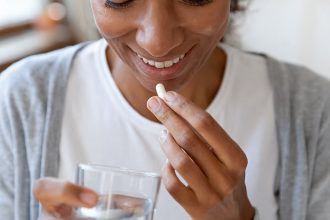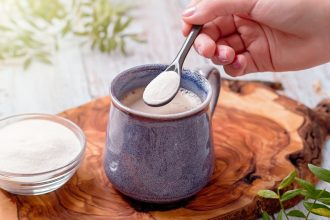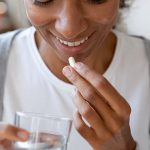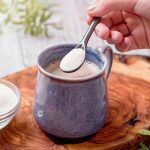Lactic acid was previously believed to be the culprit behind muscle soreness post-exercise, but it’s not solely responsible. Lactate, another substance, also contributes to this sensation. However, the exact cause of muscle burn and pain is multifaceted. Strategies such as staying hydrated and allowing muscles to rest may provide relief.
During high-intensity interval training and similar rigorous exercises, individuals often experience a burning sensation in their muscles. This sensation has long been attributed to lactic acid buildup, leading many athletes to seek ways to minimize its presence in the body for enhanced performance. However, this belief is inaccurate.
Contrary to popular belief, lactic acid does not directly cause the burn experienced during intense exercise, nor does it solely account for the prolonged soreness that follows such activity. Instead, exercise physiologists have identified lactate as the primary metabolic byproduct produced during intense physical activity.
While lactic acid and lactate are integral components involved in metabolism, particularly during vigorous exercise, the terminology surrounding their role has been clarified. Understanding their functions in the context of fitness is crucial for optimizing athletic performance.
This article delves into the intricacies of lactate, lactic acid, and exercise, elucidating their roles, production mechanisms, and the feasibility of eliminating lactic acid from the body.
Is Lactic Acid Responsible for Muscle Burn and Fatigue?
In summary, the answer is no.
It was conventionally believed that muscle burn and fatigue were caused by lactic acidosis, where an excess of lactic acid accumulated in the muscles during periods of low oxygen, like during intense exercise.
However, researchers have found that lactic acid does not actually exist in our bodies due to our blood pH being too high.
Instead, within metabolic processes, the lactic acid molecule dissociates into two components: lactate and a single hydrogen ion (proton).
Lactic acid vs. lactate
Lactic acid and lactate are terms often used interchangeably, but they represent distinct chemical entities.
Lactic acid comprises a negative lactate ion and a positive hydrogen ion.
In aqueous solutions, as is the case in the human body, lactic acid dissociates into a lactate ion and a hydrogen ion. Hence, it’s more precise to state that lactate, not lactic acid, is the exercise byproduct.
How is lactate produced?
In a simplified explanation of biochemistry and physiology, your muscles are fueled through glycolysis, a process that breaks down glucose (obtained from the foods you consume) and produces adenosine triphosphate (ATP).
ATP serves as the energy source for your muscle cells. However, the amount of ATP generated during glycolysis varies based on the presence of oxygen.
During high-intensity exercise, such as heavy weightlifting or intense cardio, your body relies more on fast-twitch muscle fibers to generate power. These fibers are not as efficient in utilizing oxygen.
In such strenuous workouts, there’s a high demand for ATP, but oxygen availability is limited. Consequently, glycolysis becomes anaerobic. In anaerobic glycolysis, glucose breakdown leads to lactate production, resulting in elevated levels of lactate in the bloodstream.
Furthermore, recent research indicates that lactate is produced more extensively than previously believed, even in aerobic conditions.
What Causes the Muscle Burn and Fatigue Sensation?
Traditionally, lactic acid has been wrongly blamed as the culprit behind muscle burn and fatigue during exercise. However, it’s important to clarify that lactate, not lactic acid, is the actual byproduct of metabolic processes. Lactate is considered a biomarker of fatigue and glucose breakdown, but it does not directly cause muscle fatigue.
In reality, lactate serves as an important energy source for various organs like the brain and heart. Moreover, the liver and kidneys can convert lactate into glucose through gluconeogenesis, providing additional energy for the body.
The misconception surrounding lactate’s role in muscle fatigue has led to its unjustified bad reputation over the years. The burning sensation experienced during intense exercise is primarily due to the accumulation of hydrogen ions in the cells, which create an acidic environment, along with phosphates, which are additional byproducts of muscular metabolism.
Does lactic acid or lactate contribute to muscle soreness?
While the temporary burn during intense sets may be attributed to a drop in cellular pH, it’s important to note that lactic acid is not the cause of delayed onset muscle soreness (DOMS) that often occurs after intense exercise.
DOMS is a complex phenomenon, and researchers are still exploring various factors that contribute to it. The prevailing theory suggests that DOMS arises from a combination of localized micro damage to muscle fibers and inflammation, factors that extend beyond the discussion in this article.
In summary, neither lactic acid nor lactate ions are responsible for the soreness experienced 12-72 hours post-workout.
What Does the Term “Lactate Threshold” Refer To?
The lactate threshold marks the point where the body’s capacity to clear lactate from the bloodstream lags behind its production rate, causing lactate to accumulate. This buildup can result from either increased lactate production or decreased lactate clearance.
During physical activity, lactate levels rise as the body converts glucose into energy. However, when exercise intensity surpasses the aerobic system’s ability to utilize oxygen, lactate accumulates in the blood.
Upon reaching the lactate threshold, the body releases lactate and hydrogen ions excessively, leading to a drop in pH and increased acidity within muscle cells, resulting in a sensation of burn. This persists until oxygen intake matches the muscle’s demand.
For instance, during squat intervals with moderate weight, the lower body may experience a pH-related burn due to faster glucose metabolism than oxygen supply, triggering heavier breathing to increase oxygen intake.
Lactate buildup from reduced clearance poses a more significant issue, often linked to diminished liver and kidney function due to factors such as medication use, alcohol consumption, or liver and kidney diseases like cirrhosis.
What is lactic acidosis?
Lactic acidosis is a serious medical condition characterized by excessive lactate accumulation in the bloodstream, typically exceeding 4mmol/L. In certain diseases, blood lactate levels can rise significantly higher due to factors such as restricted blood flow to tissues or other underlying issues.
Elevated blood lactate levels often serve as an indicator of an underlying medical condition. Even moderately increased lactate levels resulting from impaired lactate processing can pose significant health risks. Research has linked higher mortality rates to elevated lactate levels ranging from 2mmol/L to 4mmol/L, a condition known as hyperlactatemia.
While temporary increases in lactate levels, termed hyperlactatemia, can occur due to exercise, the development of harmful lactic acidosis is uncommon during intense physical activity in individuals with normal kidney and liver function.
Is Eliminating Lactate Necessary (or Feasible)?
Your body naturally metabolizes lactate in the liver and kidneys.
During intense exercise beyond your aerobic capacity, lactate accumulates.
After exercise, as you reduce intensity or stop altogether, your body continues to clear lactate, alleviating the burn and fatigue associated with pH changes.
For those in good health, no special measures are needed to eliminate lactate as the body efficiently manages this process.
Basic practices like staying hydrated during exercise support optimal bodily function.
Deep breathing during rest intervals or within sets enhances oxygen delivery to the blood, aiding lactate clearance.
Ultimately, ceasing exercise and allowing time for lactate clearance is the most effective method to eliminate excess lactate.
Preventing Lactate Accumulation
While there’s no magical solution to eliminating lactate from your system, you can enhance your lactate threshold through training.
Exceeding your lactate threshold marks the beginning of limited endurance, regardless of your fitness level. On the other hand, exercising below this threshold enables you to sustain energy levels for extended periods.
Training your body to perform at higher intensities without lactate buildup involves enhancing the efficiency of your aerobic system. Although this doesn’t directly prevent lactate accumulation, it enables you to run faster and longer before experiencing muscle burn.
A key aim of aerobic training for competitive athletes is to boost the lactate threshold. For instance, a competitive runner maintaining a 6-minute mile pace primarily utilizes the aerobic system. In contrast, a less conditioned individual running at the same pace may rely on anaerobic energy due to a less efficient aerobic system, leading to increased lactate buildup and subsequent fatigue.
Consistent training near or at your current lactate threshold can eventually allow you to sustain a 6-minute mile pace without relying on anaerobic energy, eliminating lactate buildup.
Once you surpass your lactate threshold, you’re susceptible to the effects of lactate buildup, necessitating rest and deep breathing for recovery.
The bottom line
Lactate plays a crucial role in energy metabolism and is not to blame for muscle soreness, contrary to historical beliefs. It serves as a fuel for various organs in the body.
During intense exercise, lactate is produced as a byproduct, accompanied by an increase in hydrogen ions that contribute to the sensation of fatigue and burn.
The body naturally clears lactate through kidney and liver function, aided by oxygen. Maintaining overall health and hydration supports this process, but there are limited ways to directly enhance lactate metabolism.
Elevated blood lactate due to metabolic dysfunction requires medical attention.
Improving your lactate threshold through exercise training enables you to push harder or run faster before reaching the point of lactate buildup and muscle fatigue.
Instead of fixating on lactate or lactic acid, focus on addressing delayed onset muscle soreness (DOMS) with appropriate remedies if necessary.
In the meantime, prioritize intense training, hydration, and embrace the sensation of exertion during workouts.










